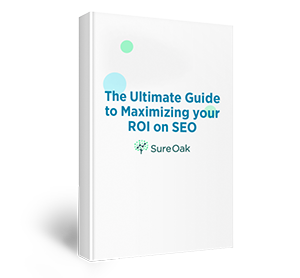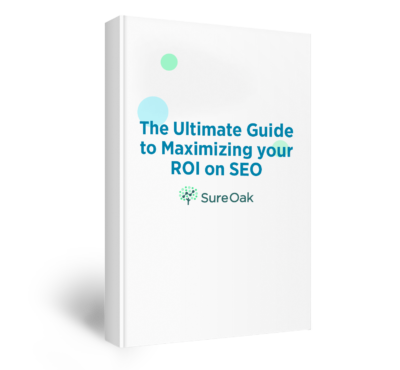
The right SEO (search engine optimization) strategy can propel you to the front page of Google and bring in customers and revenue. You put a lot of time, money, and effort into crafting an SEO campaign for your website. However, no matter how many boxes you check off, the only way to know if your campaign is successful is by measuring it. Just like athletes keep track of their time, you need to establish key performance indicators (KPIs) to measure SEO performance.
Understanding & Defining Your SEO Campaign
Set definitive goals and understand your target audience to get the most out of your SEO campaign.
What is an SEO Campaign, and Why Does It Matter?

An SEO campaign is a structured marketing effort designed to increase your website’s ranking in search engine results. An SEO campaign will include strategies such as keyword research, on-page optimization, link-building, and content creation.
Maximizing your SEO should be a high priority because 68% of online experiences begin with a search engine. That’s a lot of customers you may miss out on if your website doesn’t appear in their search results. Ranking high for targeted keywords translates directly to more visibility, traffic, authority, and potential customers — all of which affect your bottom line.
Why Measuring SEO is Essential for Campaign Success
How is SEO measured? Google uses over 200 factors to determine a website’s ranking. While the exact algorithm is proprietary information, some factors include where the keyword appears, the length of the content, the table of contents, the number and authority of backlinks, and many more.
As you can see, it would be impossible to concentrate on 200 factors at once. You also can’t rely solely on website rankings to determine how to run a successful SEO campaign. You may not see an immediate rankings boost with your SEO campaign, even if it’s working well. Measuring your progress based on specific goals and KPIs lets you focus on a manageable SEO strategy. Tracking organic traffic, bounce rate, conversion rate, and keyword rankings provide insights into your campaign’s performance.
These metrics help you understand how users are interacting with your site and content so you can make data-driven decisions about where to allocate your resources. They illustrate your success and help you plan future strategies by identifying opportunities and weaknesses. By continually monitoring and analyzing these metrics, you can make necessary adjustments to ensure that your SEO campaign aligns with your business goals and continues to deliver ROI.
Setting Goals and Key Performance Indicators (KPIs)
Before you can measure the success of your SEO campaign, you have to know what you want to achieve. Do you want to raise brand awareness, increase conversion rate, or get more people to sign up for your email list? Once you determine your goals, you can set KPIs to measure them. Setting specific KPIs will keep you from getting distracted by hundreds of possibilities.
Identifying Relevant KPIs
The KPIs you choose should directly correlate to the goals of your SEO campaign. For example, if your goal is to increase brand awareness, relevant KPIs could include new users and organic search traffic. You can track revenue from organic searches and conversion rates if you want to focus on increasing sales. Choosing the right KPIs helps you target the factors that matter for your campaign’s success with data-driven evidence.
Key Metrics to Track in Your Campaign
Some of the most relevant metrics you may want to measure include the following.
Organic Search Traffic
Organic search traffic measures the number of visitors that come to your website from a search engine. If you notice an increase in your organic search traffic, your SEO campaign is attracting more visitors and increasing your visibility.
Keyword Rankings
Ranking highly for relevant keywords drives organic traffic to your site. Tracking where your website ranks for a particular keyword can help you decide if your on-page optimization and content strategy are effective.
Conversion Rate
Conversion rate measures how many visitors complete a desired action, such as signing up for your newsletter or making a purchase. If your conversion rate is increasing, it’s a good sign your SEO campaign is turning visitors into customers.
Bounce Rate
Your bounce rate measures the number of visitors who leave your website after only seeing one page. These visitors don’t take any action, such as clicking on links or making a purchase. Ideally, your bounce rate will decrease due to your SEO campaign. A high bounce rate can indicate your website isn’t engaging your visitors.
Backlinks and Referral Traffic
A backlink is a link to your website from another website. Referral traffic measures the visitors who come to your site from backlinks. Backlinks help establish your website’s authority in your field. Monitoring your backlinks and referral traffic helps you analyze your site’s reputation and authority.
Tools and Techniques for Measuring SEO Success
Tracking all metrics involved in your SEO campaign’s success can be overwhelming. Fortunately, you can use several different tools and techniques to make the job easier.
Utilizing Google Analytics
Google Analytics is a powerful tool for tracking your site’s performance, including visitor behavior, traffic sources, and conversions. By integrating it with Google Search Console, you can get insights into keywords, landing pages, and more, including:
- Audience analysis: Understand the demographics, interests, and behavior of visitors.
- Traffic sources: Identify where your traffic is coming from, including organic search.
- Conversion tracking: Set specific conversion goals to measure success.
- Site content performance: Analyze how individual pages perform, including bounce rates and time on page.
Analyzing Organic Search Traffic Data
Organic search traffic data provides insights into how many users find your site through search engines. Analyzing this data can reveal:
- Trends over time: Spot increases or decreases in organic traffic.
- Top performing pages: Identify the most visited pages through organic search.
- User engagement: Measure metrics like bounce rate, pages per session, and average session duration for organic visitors.
SEO Tools for Comprehensive Performance Measurement
Many SEO tools provide comprehensive performance measurements, including:
- SEMrush: Offers keyword research, site audit, competitor analysis, and more
- Ahrefs: Known for backlink analysis, keyword tracking, and content research
- Moz: Provides tools for keyword research, site audits, and link analysis
Keyword Tracking Tools
Tracking keyword rankings is vital for understanding how your SEO efforts are translating into search visibility:
- Google Search Console: Free tool to monitor keyword performance
- SERPWatcher by Mangools: Focuses specifically on tracking keyword rankings
Backlink Analysis Tools
Understanding your backlink profile is essential for SEO success:
- Ahrefs’ Site Explorer: Offers detailed backlink analysis
- Majestic: Provides insight into backlink quantity and quality
SEO Auditing
SEO audit services comprehensively evaluate your site’s search engine visibility and performance. You can audit different aspects of your website:
- Technical audit: Examines site architecture, loading speed, mobile optimization
- Content audit: Analyzes content quality, relevance, and keyword optimization
- Off-page audit: Reviews backlink profile, social signals, and other off-page factors
Measuring the Impact of On-Page Optimization
On-page optimization refers to all the measures that can be taken directly within your website to improve its position in search rankings. By focusing on key metrics, you can understand how your on-page SEO efforts are translating into success. Here are some useful metrics:
- Organic search traffic: Visitors coming from search engines
- Keyword rankings: Positions in search results for targeted keywords
- Conversion rate: Percentage of visitors completing desired actions
- Bounce rate: Percentage of visitors leaving after viewing one page
- Page loading speed: Time taken for a page to load fully
- User engagement metrics: Average time on page, pages per session
- Crawl errors and indexing status: Search engine’s ability to crawl and index pages
- Backlink profile: Internal and external links to the site
- Social shares and interaction: Shares, likes, and comments on social media platforms
Analyzing Off-Page and Backlink Metrics
Analyzing off-page and backlink metrics requires examining factors that influence your site’s reputation and visibility outside of its own pages. By understanding and monitoring these elements, you can develop strategies to enhance your off-page SEO, build valuable relationships, and improve your site’s standing in search engine results.
- Quality of backlinks: Evaluation of the credibility and relevance of linking sites
- Quantity of backlinks: Total number of incoming links to the site
- Anchor text analysis: Examination of the clickable text in hyperlinks
- Link building opportunities: Identification of potential sites for link building
- Social signals: Tracking likes, shares, and comments on social media platforms
- Brand mentions: Monitoring unlinked mentions of your brand across the web
- Guest posting impact: Measuring the effect of guest posts on other sites
- Influencer outreach effectiveness: Assessing the success of collaborations with influencers
Measuring SEO ROI and Business Impact
Understanding SEO ROI helps justify investments in SEO, guides ongoing strategies, and supports overall business objectives. Follow these steps to measure your campaign’s SEO:
- Define goals and objectives: Identify and align specific business goals with relevant KPIs such as organic traffic growth or conversion rate.
- Track revenue and conversions: Measure and quantify conversions from organic traffic using tools like Google Analytics.
- Analyze costs: Add up all SEO-related expenses, such as tools, agency fees, staff costs, online marketing, and content creation.
- Calculate ROI: Use the formula (Gain from Investment – Cost of Investment) / Cost of Investment, considering long-term value if applicable.
- Consider other business impacts: Look into brand awareness, customer retention, loyalty, and competitive positioning using tools like Google Trends or social listening platforms.
Create Successful SEO Campaigns With Sure Oak
At Sure Oak, we can help you grow your traffic and leads with proven, results-oriented SEO strategies. We take the time to understand your goals and craft an SEO campaign that aligns with your business goals. Reach out today to learn more.




